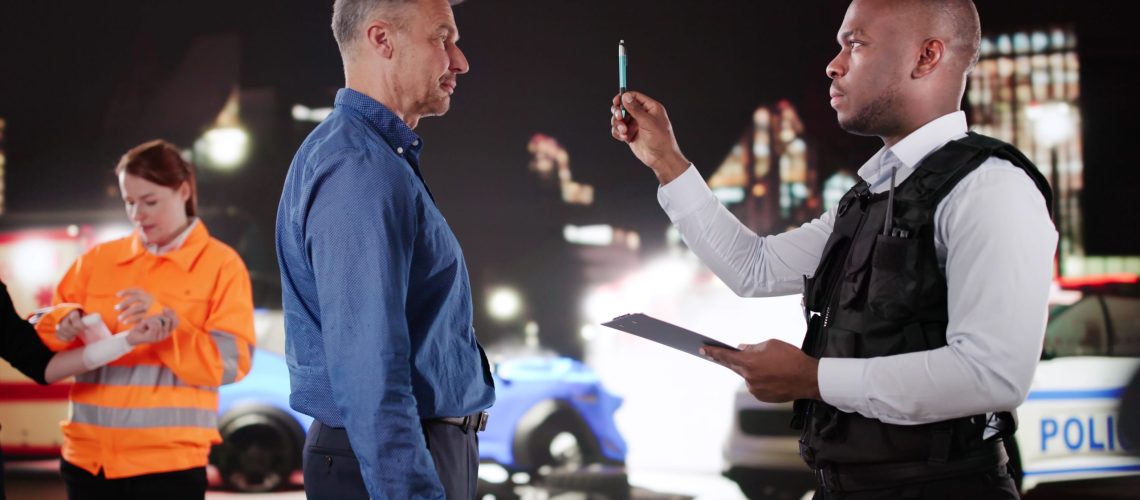How Accurate Are Field Sobriety Tests in San Diego’s Coastal Climate?
Field sobriety tests (FSTs) are often used by law enforcement officers in San Diego to help determine whether a driver is under the influence of alcohol or drugs. These tests are a standard part of many DUI investigations but they are not infallible. In fact, environmental factors common to San Diego’s coastal areas may affect the accuracy of these tests and even lead to wrongful arrests.
If you were asked to perform a field sobriety test in San Diego County, especially near the coast, it’s important to understand how local conditions can interfere with the results, and how those issues may factor into your DUI defense.
What Are Field Sobriety Tests?
Field sobriety tests are physical tasks administered by law enforcement officers during a DUI stop. They are intended to provide clues of impairment, based on how a person performs under divided attention.
The three standardized field sobriety tests used by the National Highway Traffic Safety Administration (NHTSA) include:
- Horizontal Gaze Nystagmus (HGN): Measures involuntary eye movement.
- Walk-and-Turn (WAT): Involves walking heel-to-toe along a straight line and turning.
- One-Leg Stand (OLS): Requires the subject to stand on one leg and count aloud.
How San Diego’s Coastal Environment Affects Field Sobriety Tests
Uneven or Sloped Surfaces
In areas like Pacific Beach, La Jolla, or Ocean Beach, sidewalks and parking lots may be sloped, sandy, or uneven. Even sober individuals can have difficulty performing balance-based tests under these conditions. A person wearing sandals or flip-flops on an uneven surface may be mistakenly viewed as impaired.
Wind and Weather Conditions
San Diego’s coastlines experience strong gusts, fog, and occasional drizzle, all of which can impair a person’s ability to perform FSTs accurately. Wind can affect balance, while fog or moisture can make surfaces slick. If the Walk-and-Turn or One-Leg Stand was conducted during poor weather, the results may not be reliable.
Lighting Conditions
FSTs are often conducted at night, especially near nightlife districts like Mission Beach or Gaslamp. Low visibility or flashing lights from police vehicles can interfere with the accuracy of the HGN test, which requires a clear view of the eyes and consistent lighting.
Foot Traffic and Distractions
Busy boardwalks and beachside roads can create distractions that interfere with test performance. Passing cars, noise from pedestrians, or even camera flashes can all contribute to performance errors that aren’t related to intoxication.
Are Field Sobriety Tests Required?
In California, you are not legally required to submit to field sobriety tests. They are voluntary. Officers may imply otherwise, but you have the right to politely decline without legal penalty.
However, if you do submit to the tests, and they are performed under poor environmental conditions, the results may be challenged as part of your DUI defense.
Challenging Field Sobriety Test Results
An experienced DUI lawyer can evaluate whether the conditions of your test affected the reliability of the results. Some common strategies include:
- Questioning the location (sloped surface, poor lighting, etc.)
- Presenting weather data for the date and time of arrest
- Cross-examining the officer on how standardized procedures were followed
- Providing evidence of medical conditions or footwear that may have affected balance
A well-prepared defense can cast doubt on whether your performance on the tests was truly indicative of impairment.
Get Help from a San Diego DUI Attorney
If you were arrested for DUI in San Diego after performing a field sobriety test, don’t assume the test results are conclusive. Many factors, especially environmental conditions, can impact the reliability of these tests, and that could play a central role in your defense. To speak with an experienced San Diego DUI attorney about your case, contact California DUI Lawyers Association Specialist, Rick Mueller, today for a free consultation.
How Accurate Are Field Sobriety Tests in San Diego’s Coastal Climate?

